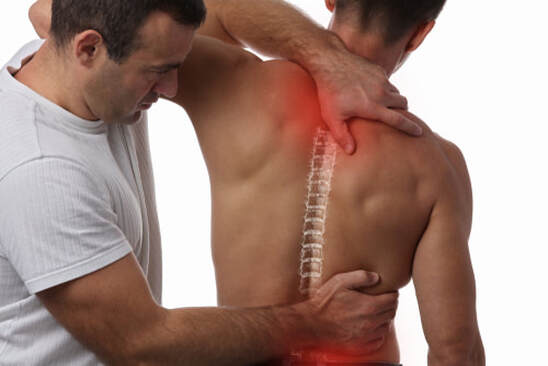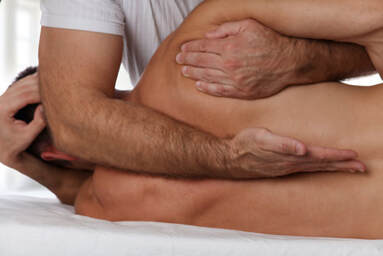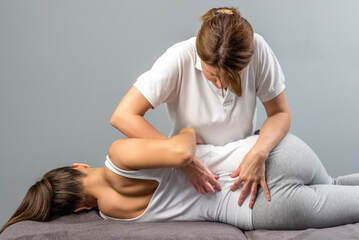Osteopathic Manual Therapy
What is Osteopathic Manual Therapy?
Osteopathy is a hands-on treatment aimed at boosting the body's innate healing powers. Osteopathic therapy has been shown to be successful in addressing various physical conditions such as joint pain, sciatica, neck pain and headaches, back pain, minor injuries, cramps, digestive issues, circulation problems, osteoarthritis, rheumatic pain, nerve pain, arthritis, and fibromyalgia. Additionally, research suggests that osteopathic manual therapy can help alleviate stress and promote relaxation, promoting health.
Who Should Choose Osteopathic Manual Therapy
Osteopathic manual therapy is beneficial for individuals experiencing a range of issues, such as back pain, neck pain, headaches, and joint pain and is an excellent alternative for treatments such as chiropractic medicine. Those who should consider choosing osteopathic manual therapy are individuals looking for a natural and non-invasive treatment option, as well as those seeking to address the root cause of their symptoms rather than just masking them with medication. Osteopathic manual therapy is also suitable for people who prefer a hands-on approach to health and are committed to actively participating in their own recovery process.
What Does Osteopathic Manual Therapy Feel Like?
In accordance with philosophical principles, the goal of treatment is to identify and eliminate movement dysfunctions and their associated compensations, while improving circulation and allowing the body's natural healing process to function optimally.
|
Manual osteopathic therapists utilize gentle, hands-on techniques to restore mobility to tissues, structures, and body systems that are restricted. Depending on the techniques employed, each session may have a distinct feel and appearance. For instance, "articulations" involve large, rhythmic circular movements that gently stretch the body and promote relaxation, while also balancing the nervous system. "Muscle energy" techniques utilize resisted muscular contractions, followed by relaxation and progressive stretching, to address tissue restrictions. "Functional" techniques apply sustained, gentle pressure to soft tissues or either side of the joint, holding them in place until they release. In "cranial" techniques, which inspired craniosacral therapy, the focus is on listening to the strains, tensions, and restrictions held in the tissues and facilitating their resolution through subtle manipulations. While some patients may immediately feel their tissues releasing during treatment, others may not notice a significant change until after the session.
|
Chiropractor vs Osteopathic Manual Therapists
When it comes to seeking treatment for musculoskeletal issues, many people often consider either a chiropractor or an osteopathic manual therapist. While both professions focus on improving the body's physical wellbeing, there are key differences between the two. Chiropractors primarily treat spinal issues through manual adjustments, focusing on the alignment of the spine to alleviate pain and improve overall function. On the other hand, osteopathic manual therapists take a more holistic approach, considering the body as a whole and using a range of techniques, including soft tissue manipulation and joint mobilization, to address not just spinal issues but also other health concerns. Both professions can provide effective treatment, so it's important to consider your individual needs and preferences when choosing between a chiropractor and an osteopathic manual therapist.
What is the Philosphy of Osteopathic Manual Therapy?
|
One of the most critical elements in this relationship is movement, as any restrictions in the body's ability to move can reduce its ability to function effectively. This reduction in function can lead to compensations in other areas, eventually leading to tissue damage, pain, and other symptoms. Therefore, osteopathic therapy regards reduced mobility as the root cause of many diseases, rather than a consequence of symptoms.One of the most critical elements in this relationship is movement, as any restrictions in the body's ability to move can reduce its ability to function effectively. This reduction in function can lead to compensations in other areas, eventually leading to tissue damage, pain, and other symptoms. Therefore, osteopathic therapy regards reduced mobility as the root cause of many diseases, rather than a consequence of symptoms.
|
If you are in Kelowna and seeking osteopathic practitioners, you may benefit from exploring the principles of osteopathy, which aim to address the root cause of physical dysfunction through manual therapy. By improving mobility and function, osteopathic treatment can alleviate pain and other symptoms while promoting overall health and well-being.
What Can I Expect From My First Visit?
During a typical first session with an osteopathic manual therapist at Balance Point in Kelowna, the patient's reasons for seeking treatment, medical history, lifestyle, diet, sleep, and general health are discussed in-depth. This is followed by a physical examination to determine the cause of the complaint, during which the patient may choose to undress to their underwear. Active and passive movement of the affected areas, as well as palpation of the involved tissues, are typically used to identify the specific areas of restriction responsible for the patient's complaint. Based on the patient's needs and preferences, treatment plans are devised for each specific case, usually involving a blend of different techniques. However, patients with definite preferences are welcome to request whatever approach suits them best.
History of Osteopathic Manual Therapy
|
Developed in the 19th century by American physician, farmer, and abolitionist Andrew Taylor Still, manual osteopathic medicine emerged as a drug-free medical approach following Still's personal tragedy of losing three children to spinal meningitis. After dedicating a decade to the meticulous study of human anatomy, Still developed precise anatomical manipulations aimed at counteracting disease processes and relieving pain. He publicly introduced osteopathy as a medical philosophy in 1874 and founded the American School of Osteopathy in Kirsville, Missouri in 1892, which now is A.T. Still University. In the following decades, graduates of Still's school disseminated osteopathy throughout the U.S., Canada, Britain, and other countries.
|
According to Still's observation, the foundation of osteopathy is the correlation between the form and function of anatomical structures. Any changes in the structure, whether caused by trauma, poor posture, or other factors, can significantly affect its function. One of the most critical elements in this relationship is movement, as any restrictions in the body's ability to move can reduce its ability to function effectively. This reduction in function can lead to compensations in other areas, eventually leading to tissue damage, pain, and other symptoms. Therefore, osteopathic philosophy regards reduced mobility as the root cause of many diseases, rather than a consequence of symptoms.
This perspective on the body is grounded in the belief that movement restrictions, including stiffness and soft tissue changes such as "knots" in muscles, hinder circulation to and from the affected area. This lack of circulation leads to a reduced supply of oxygen and nutrients necessary for cellular activity, and the lymph vessels are limited in their ability to flush waste products and inflammatory chemicals from the space between cells. This deficiency and stagnation negatively impact tissue function and maintenance while reducing the immune system's ability to ward off disease. As a result, the affected tissues become susceptible to disease agents and infections.
If you are looking for a qualified manual osteopathic therapist in Kelowna, consider exploring the benefits at Balance Point for your physical body and mental well-being. With its proven track record of treating a range of physical conditions and promoting relaxation, osteopathy can be a valuable addition to your healthcare regimen.




